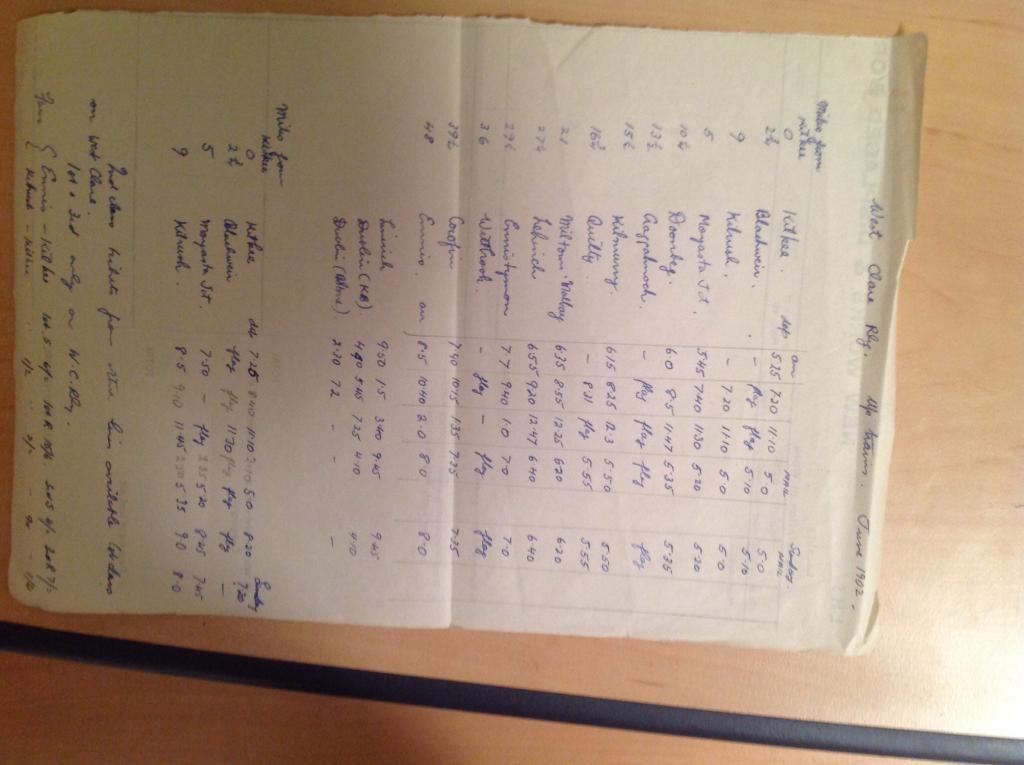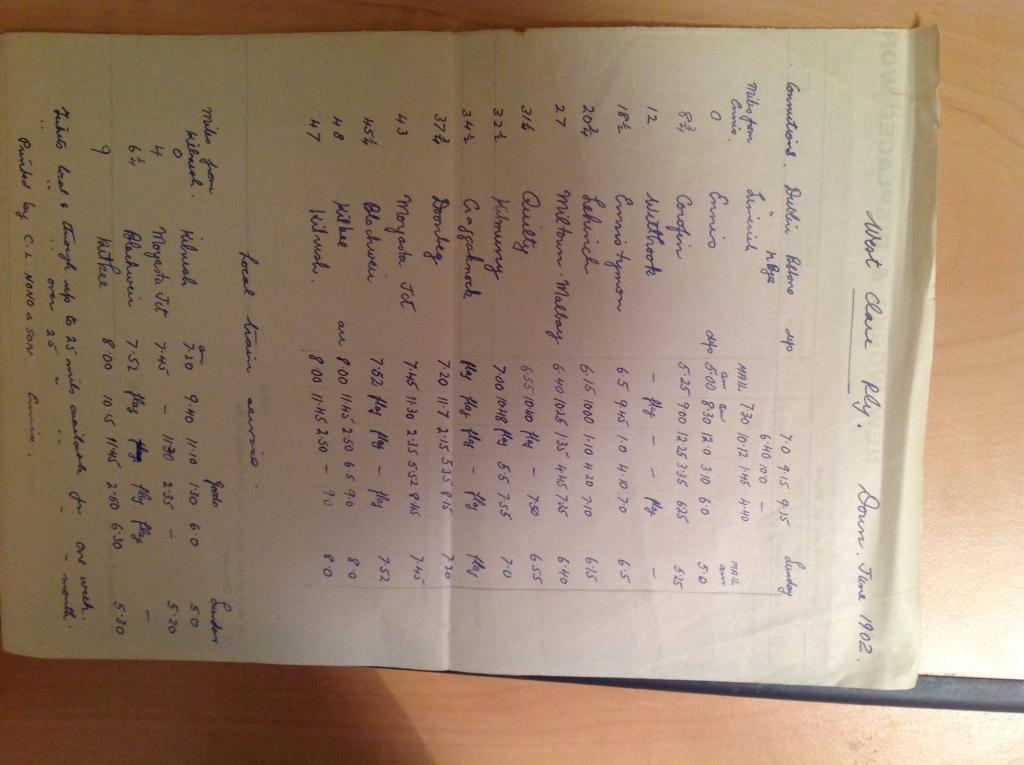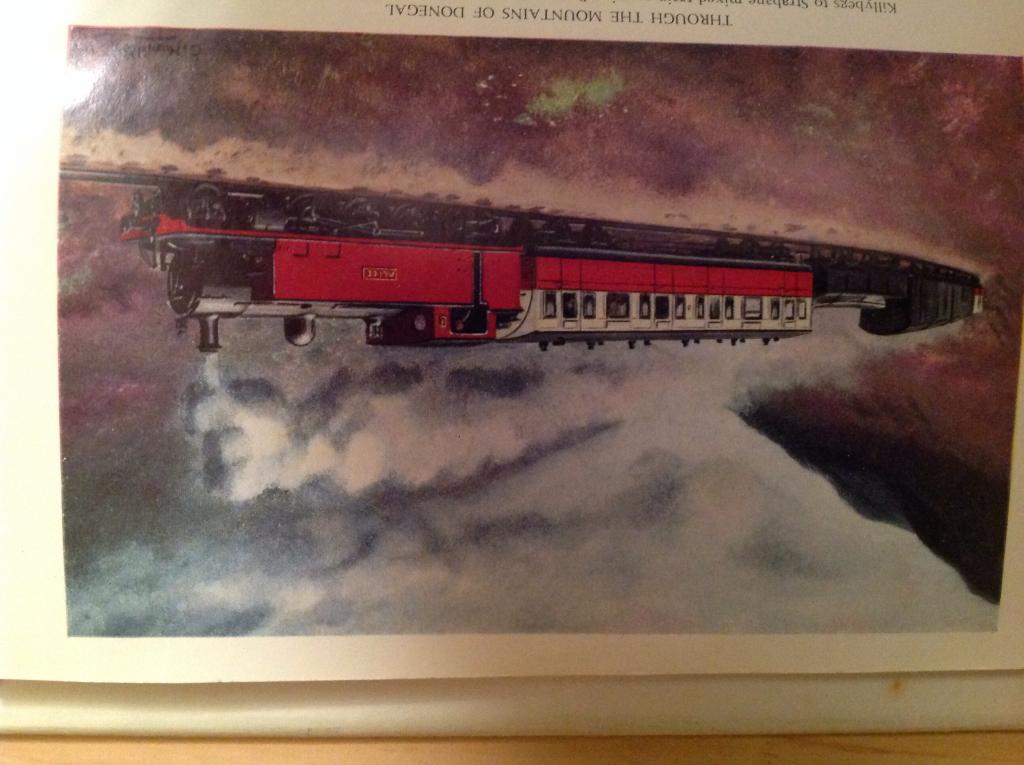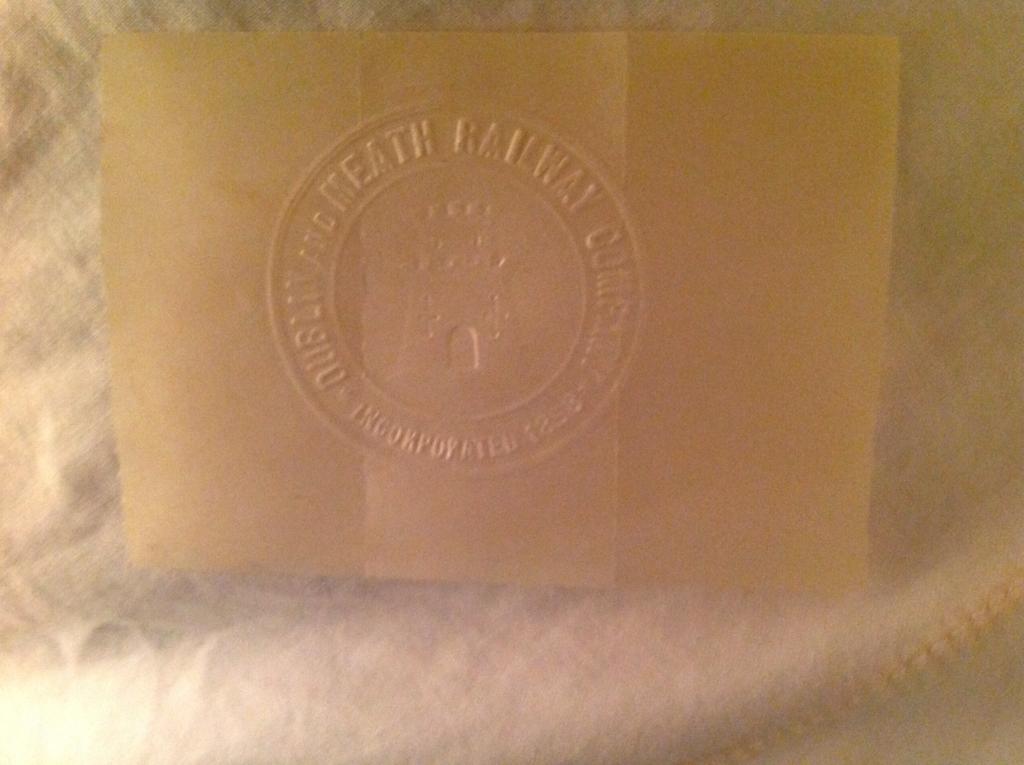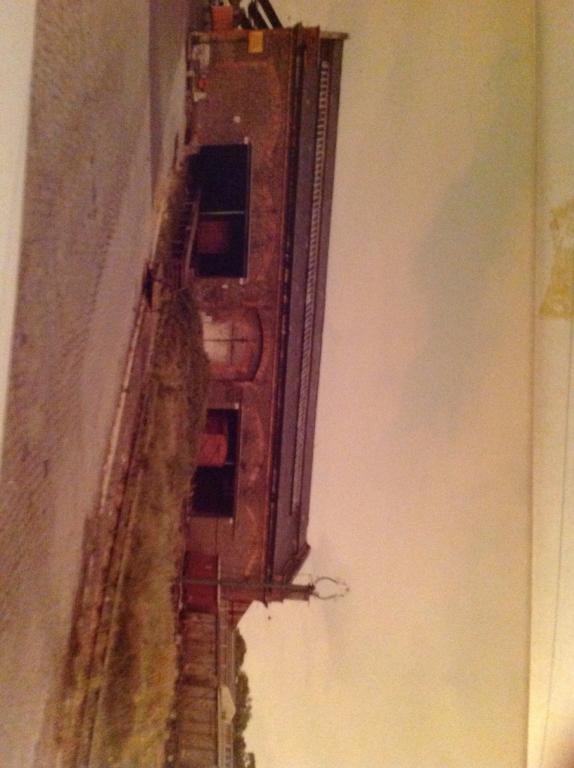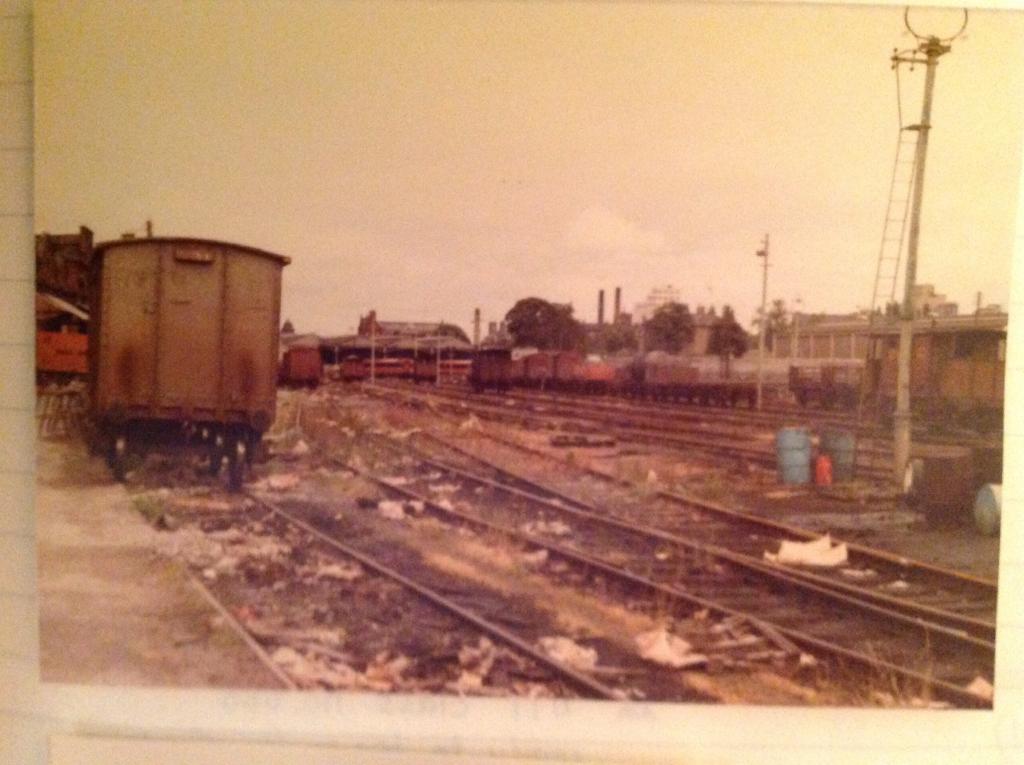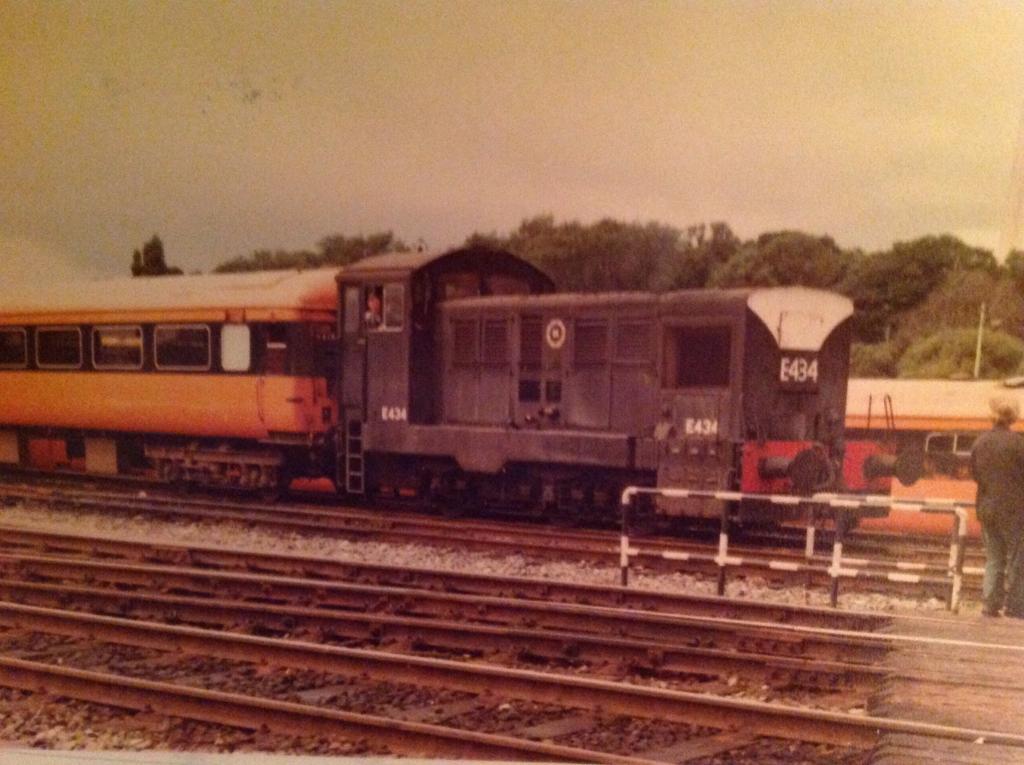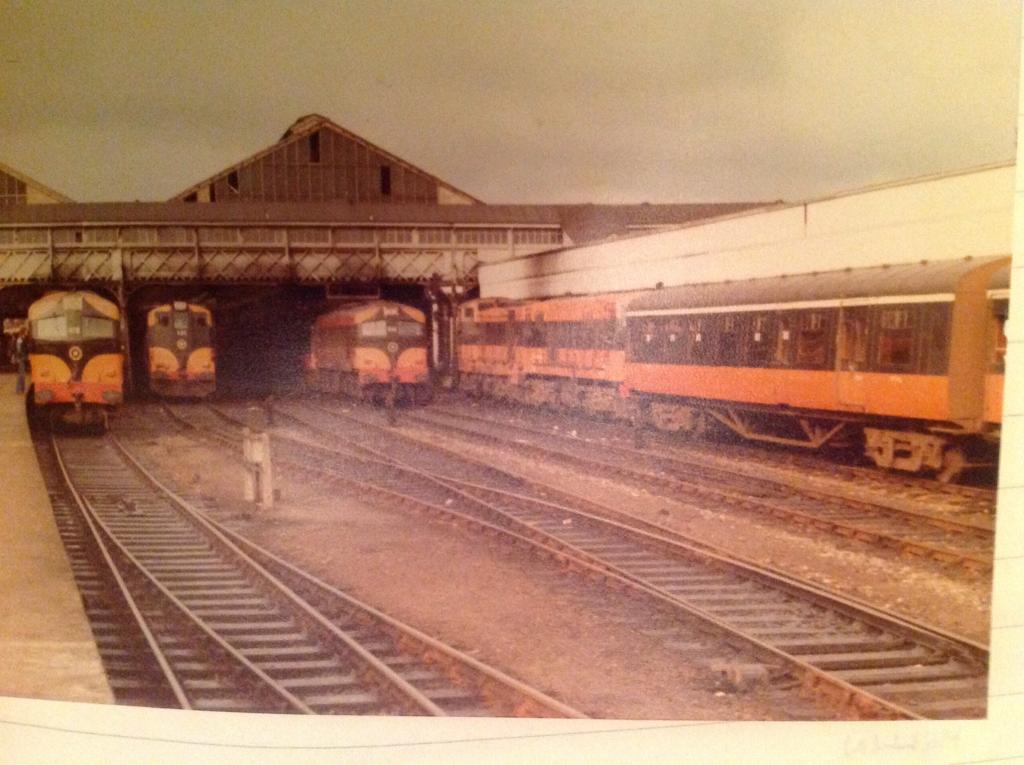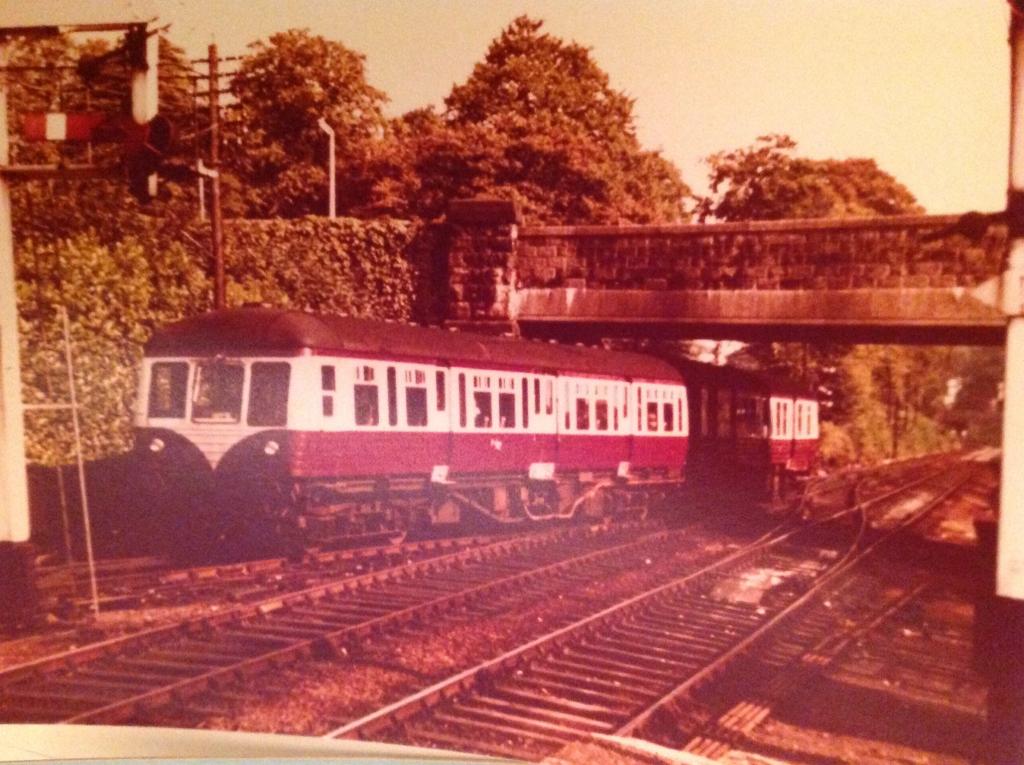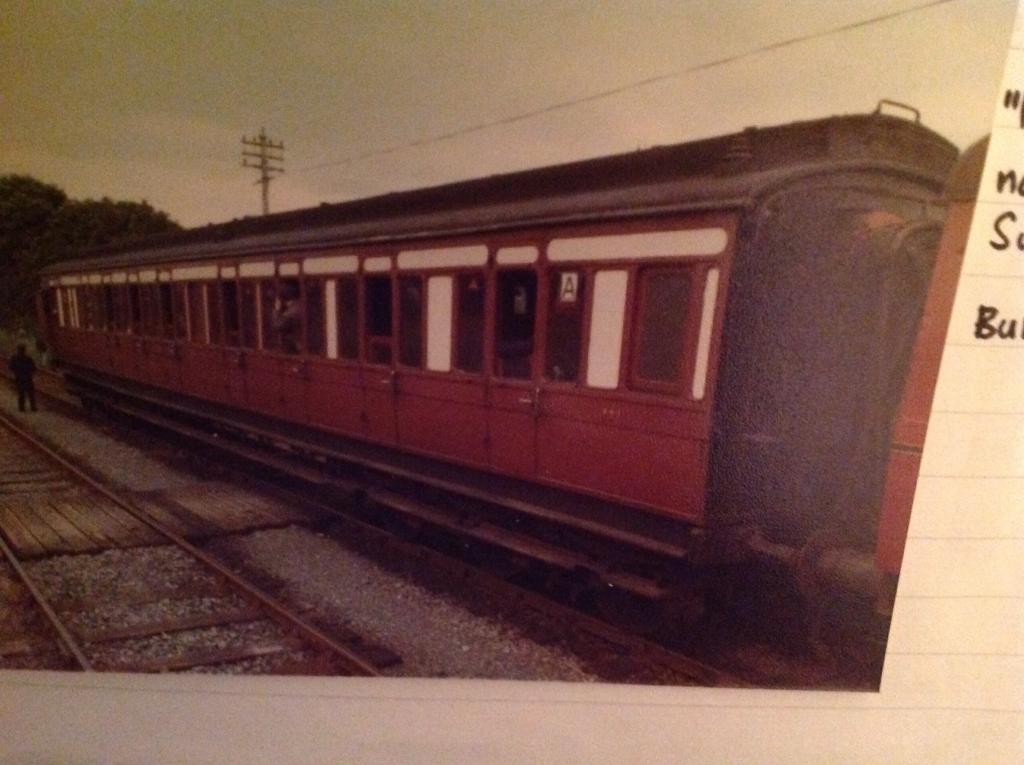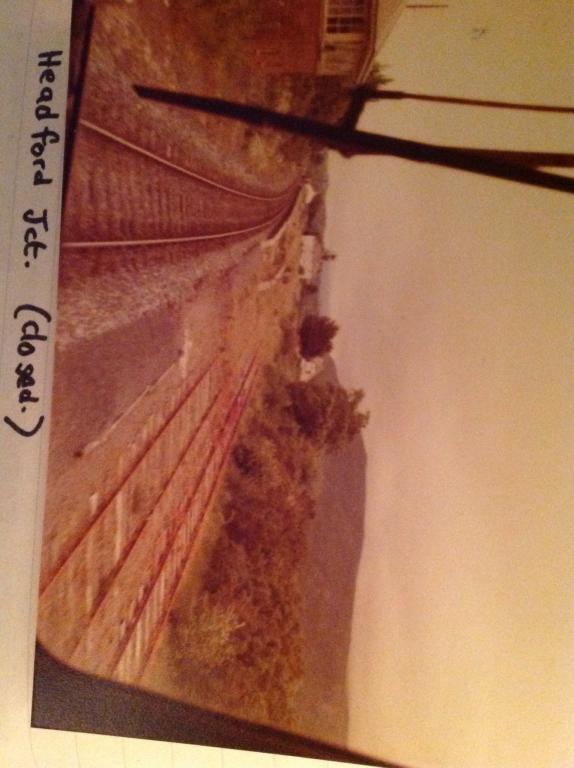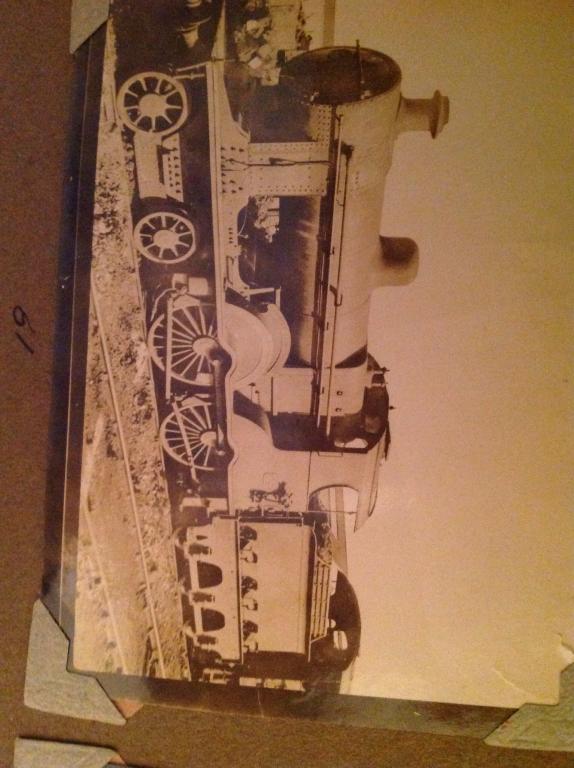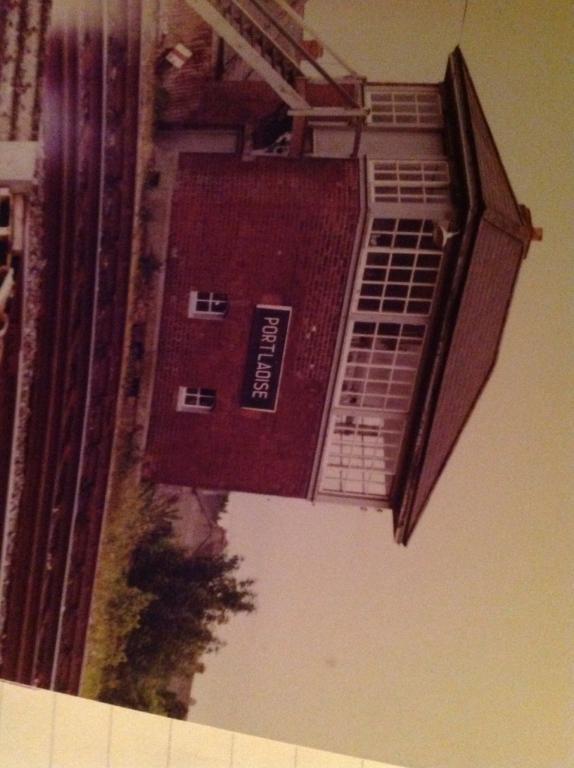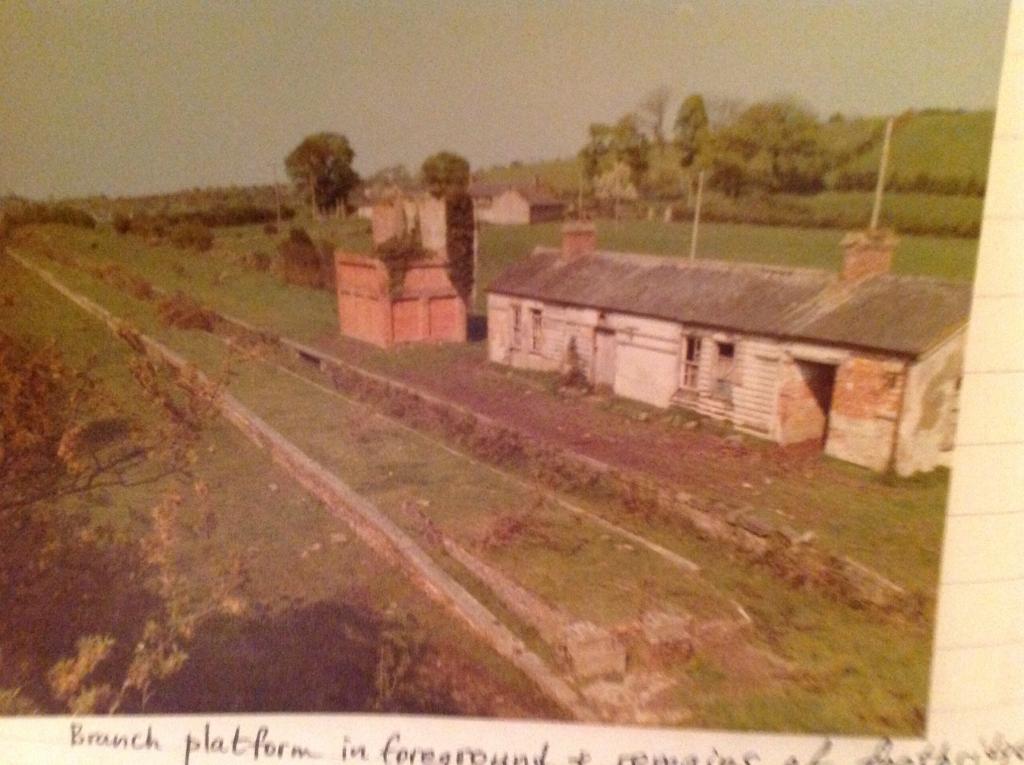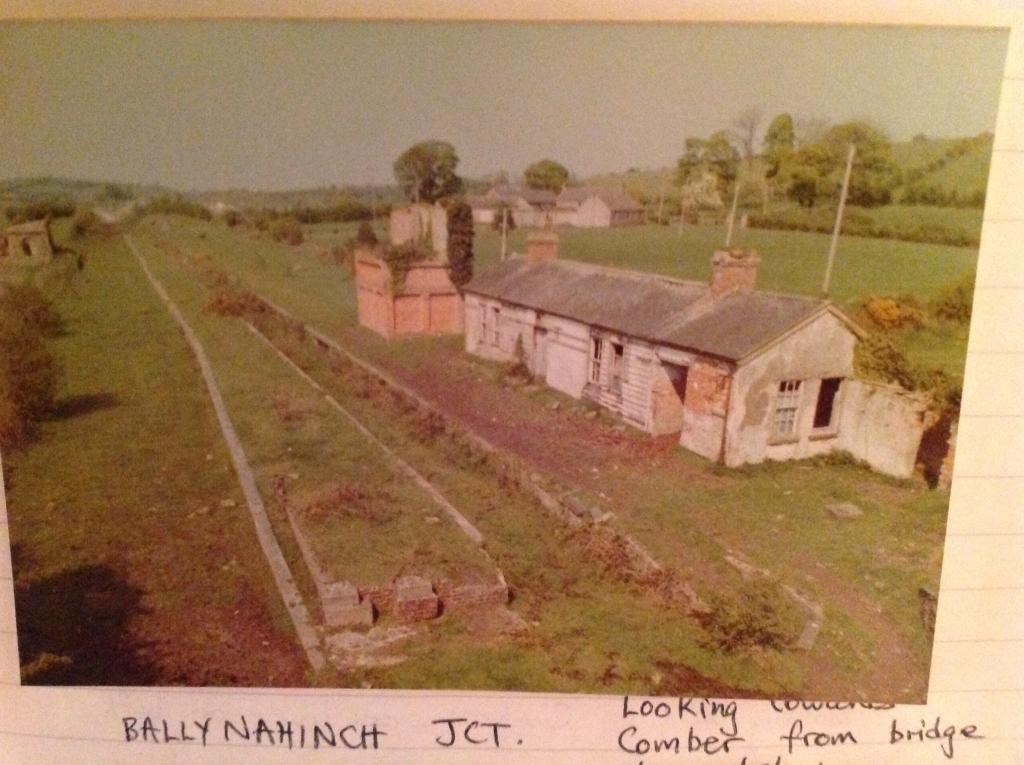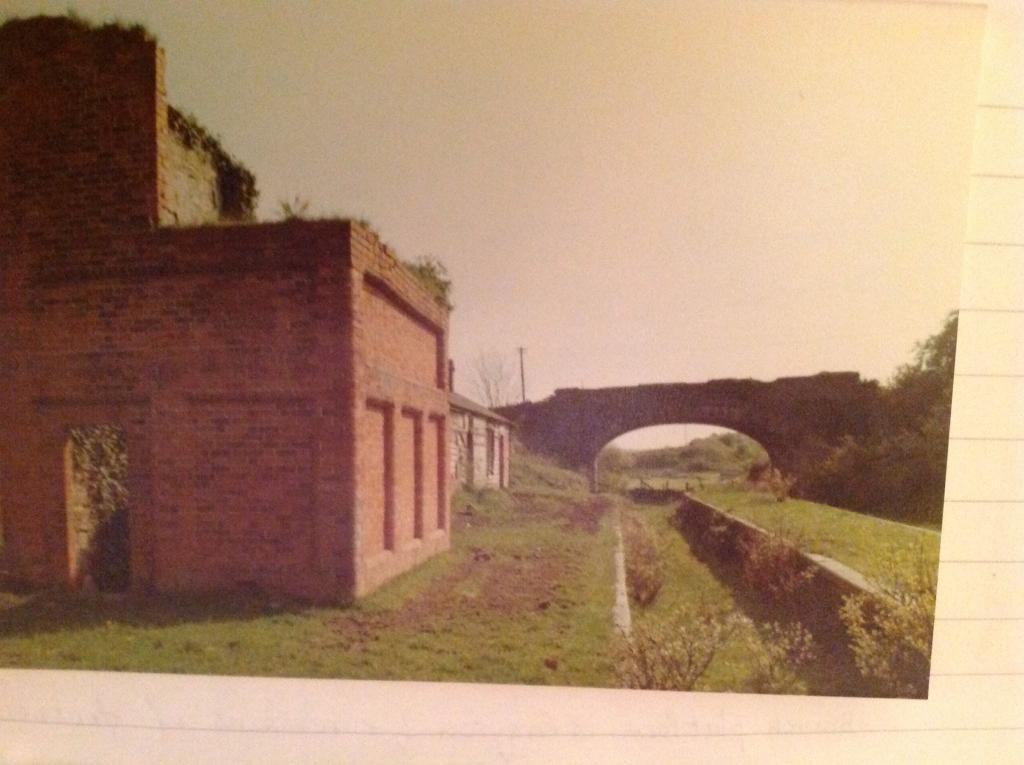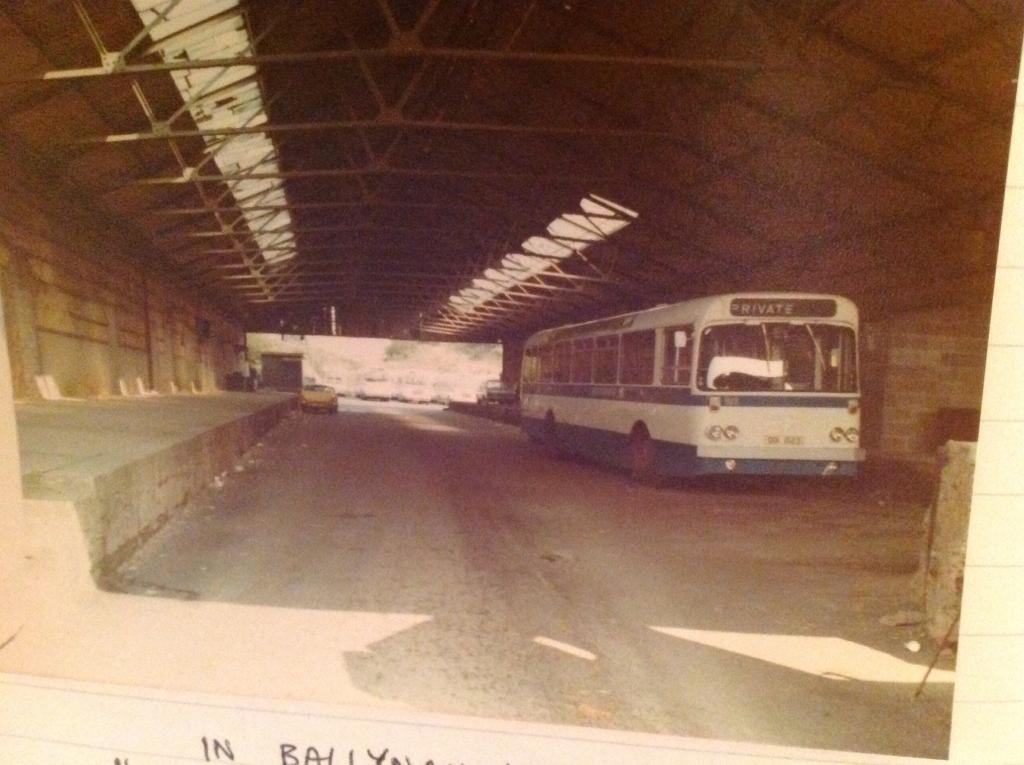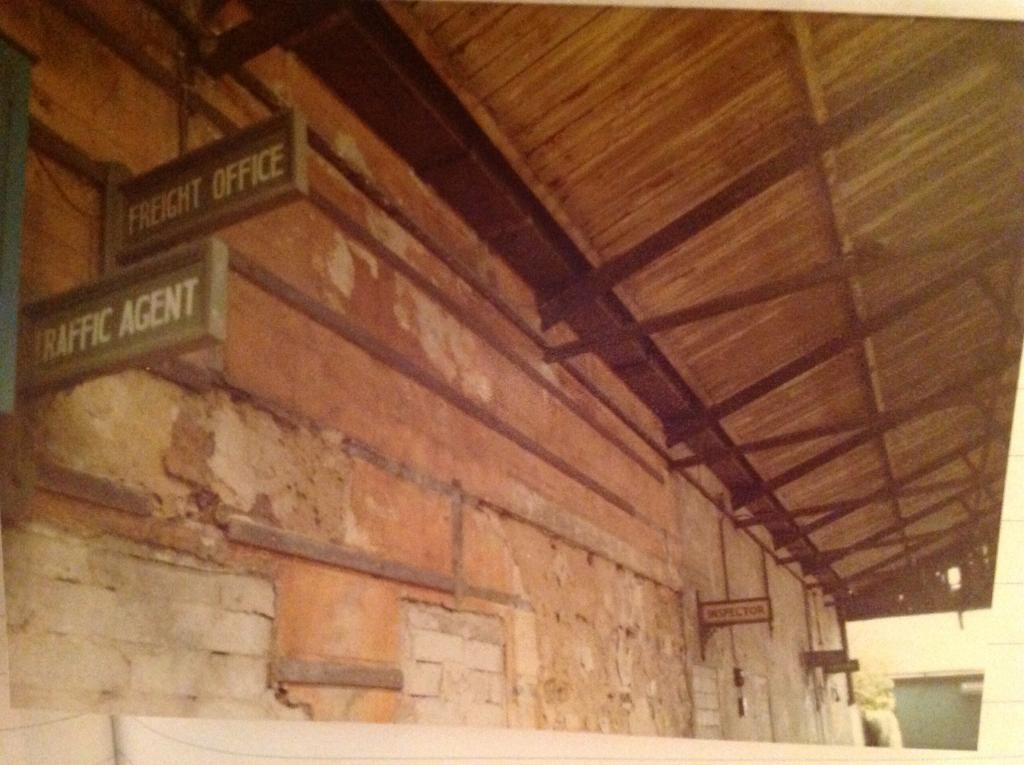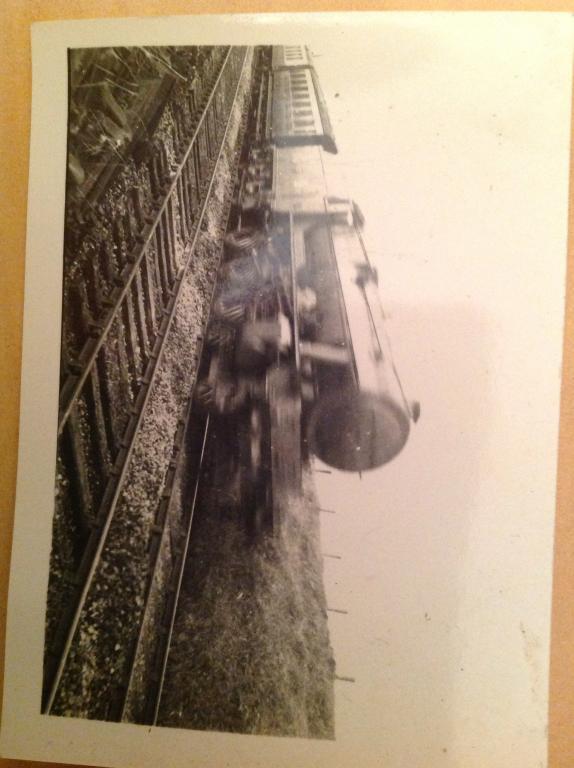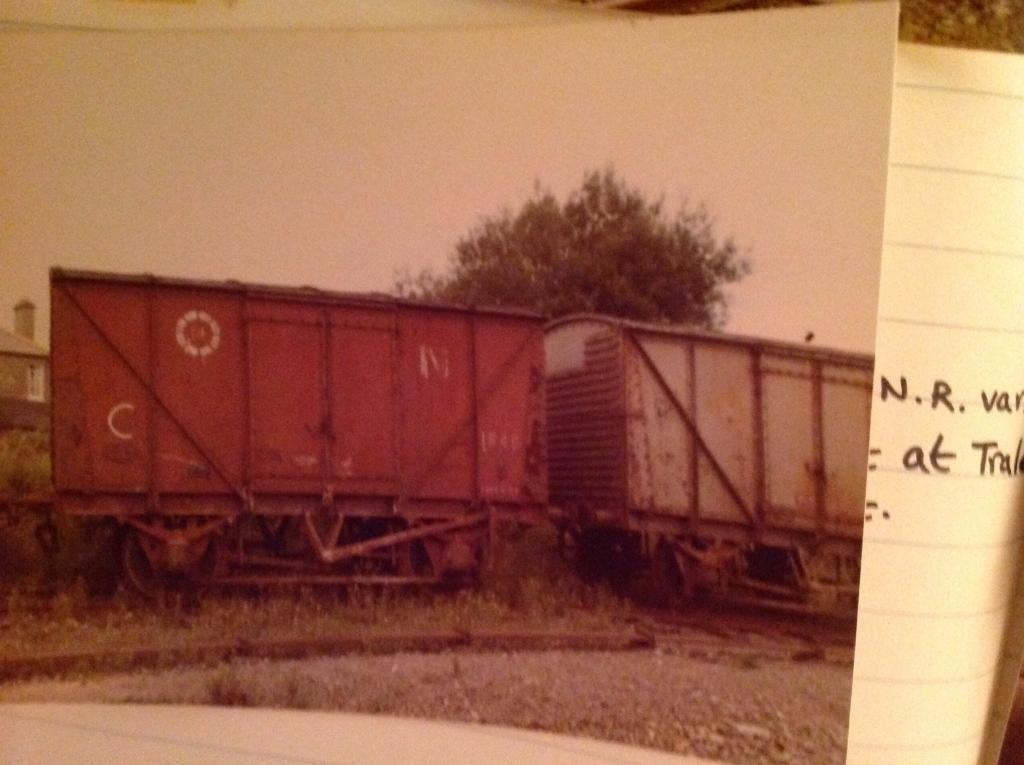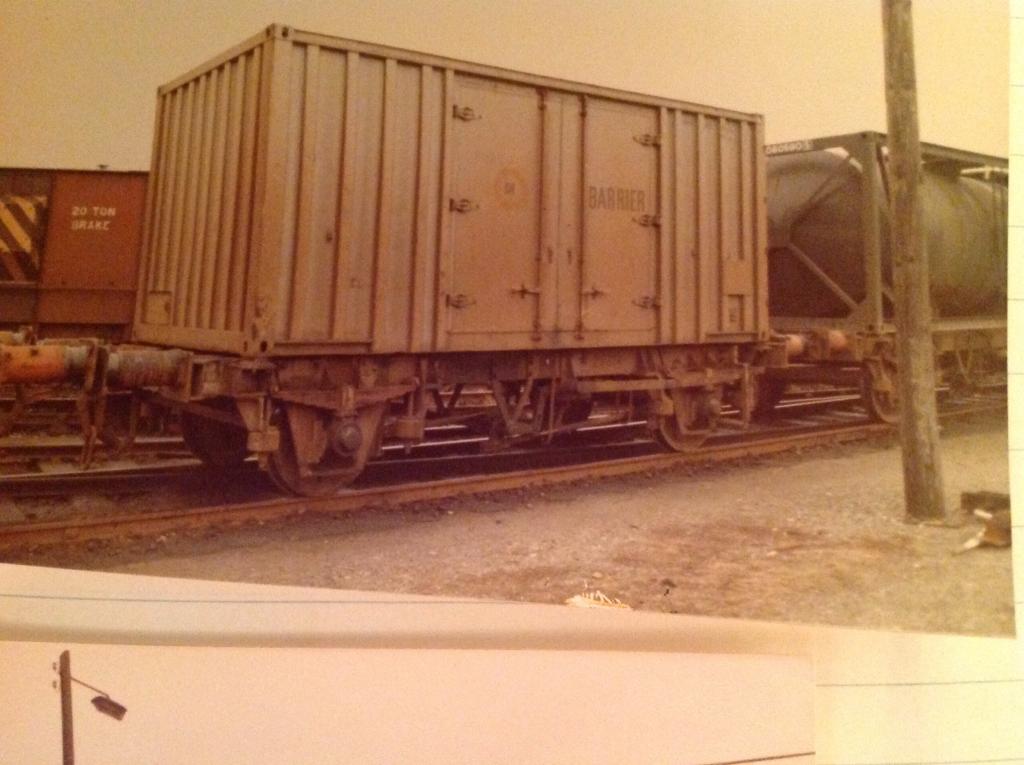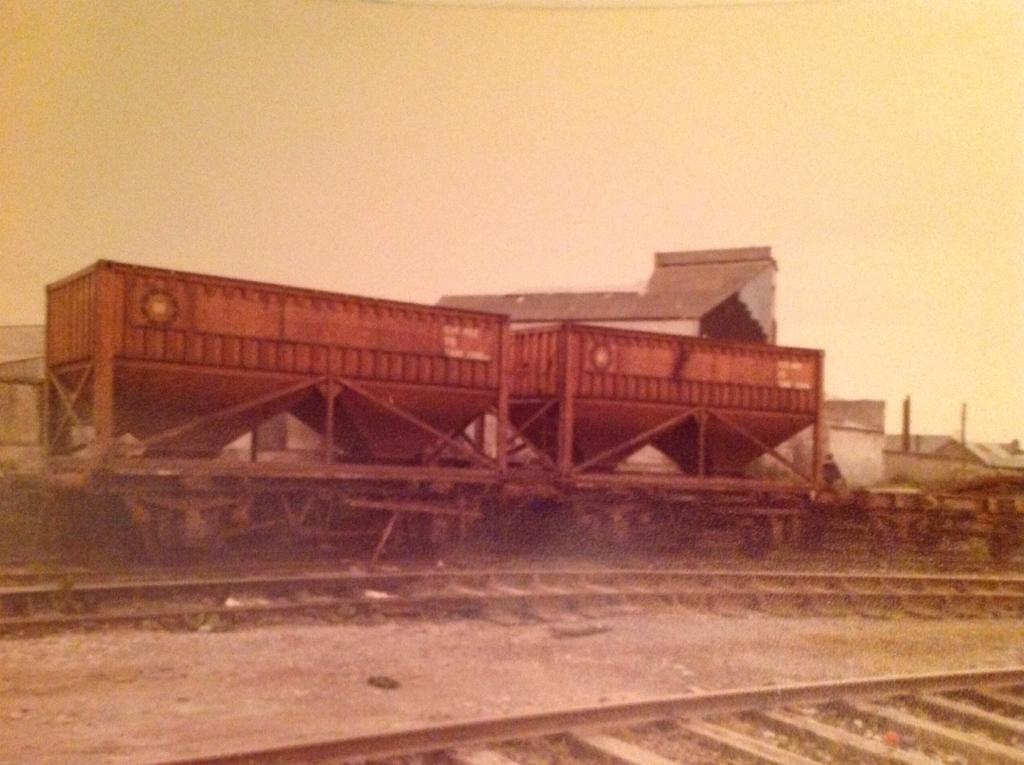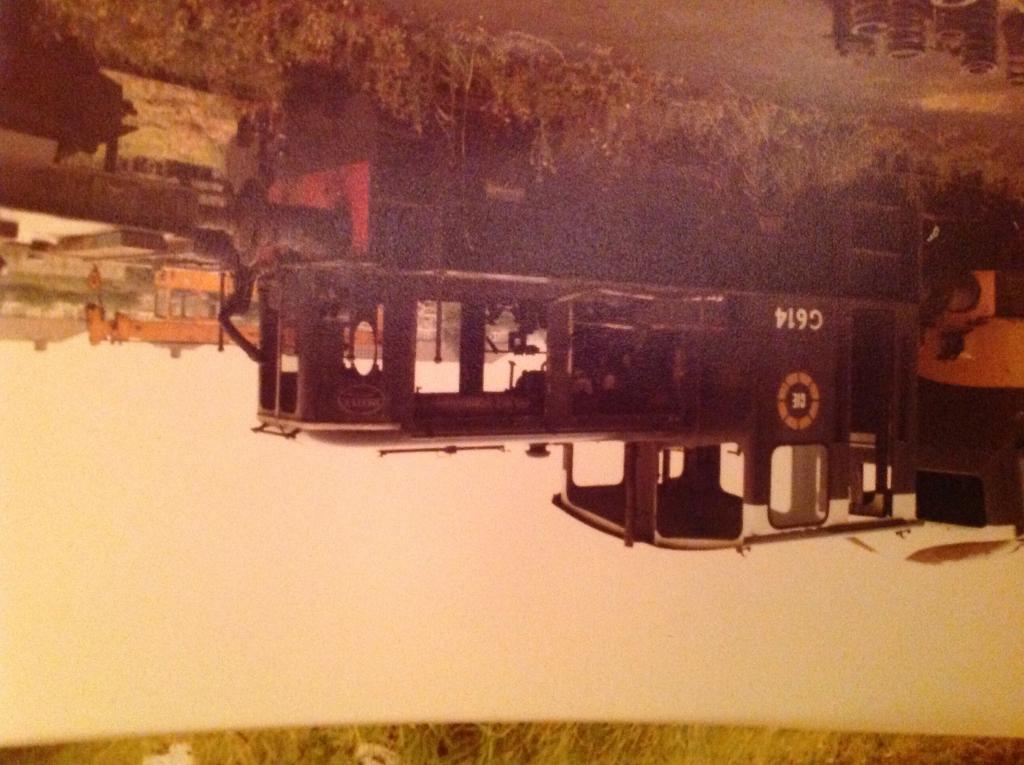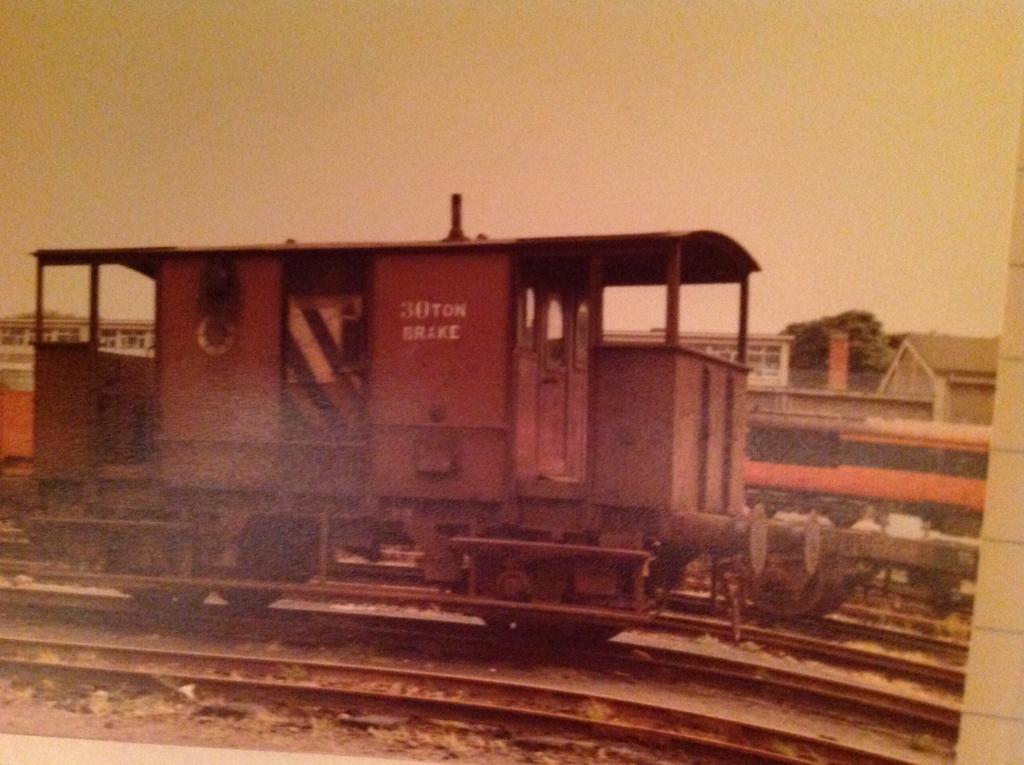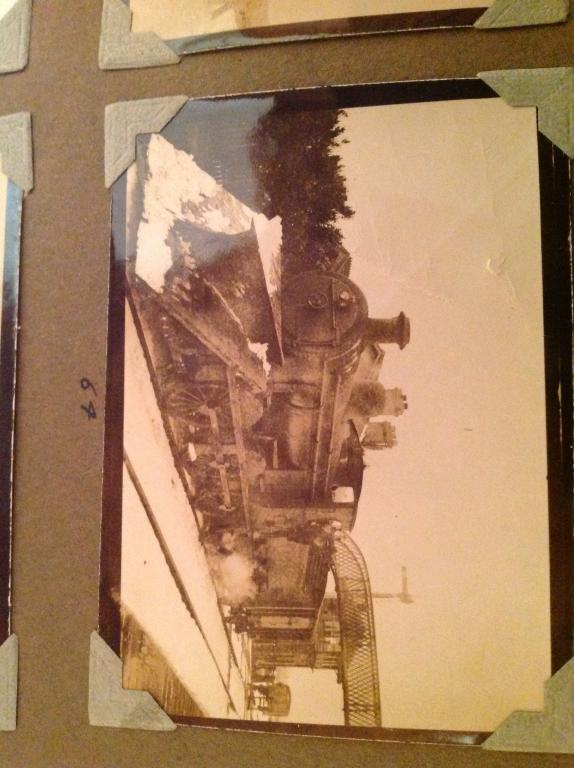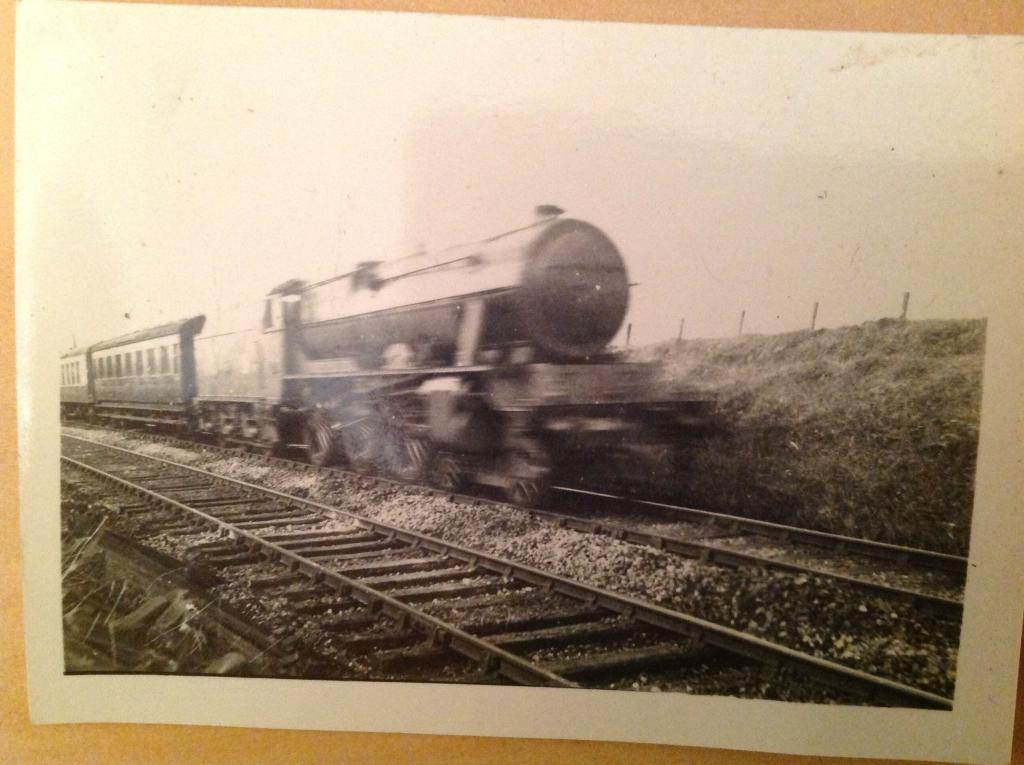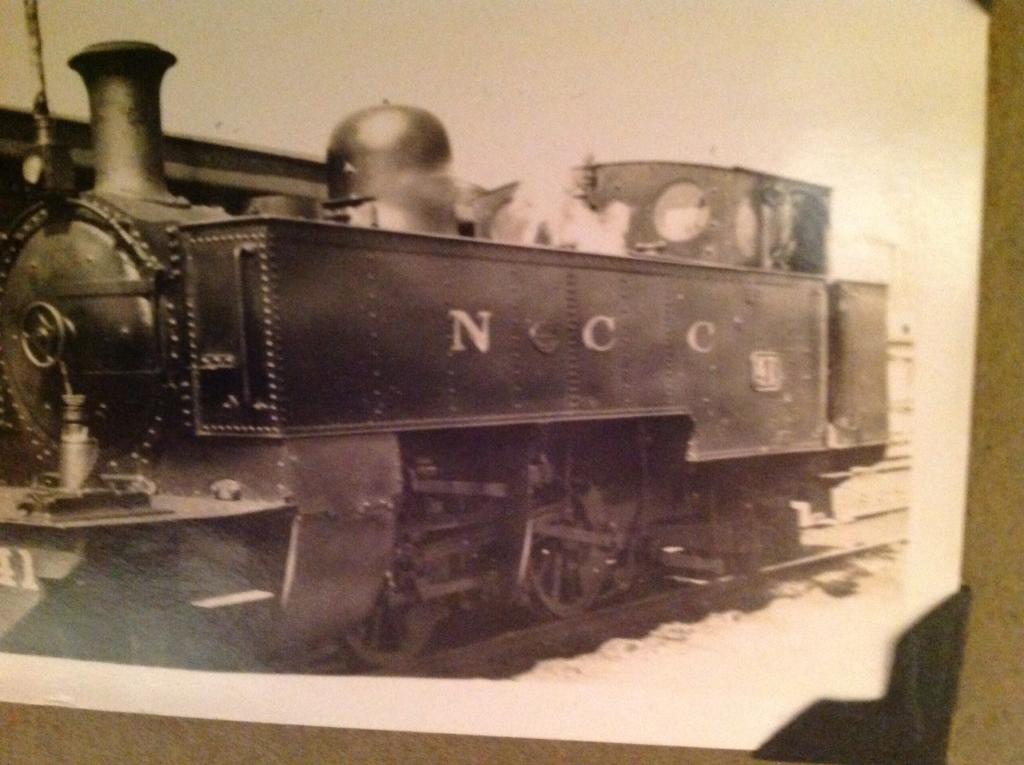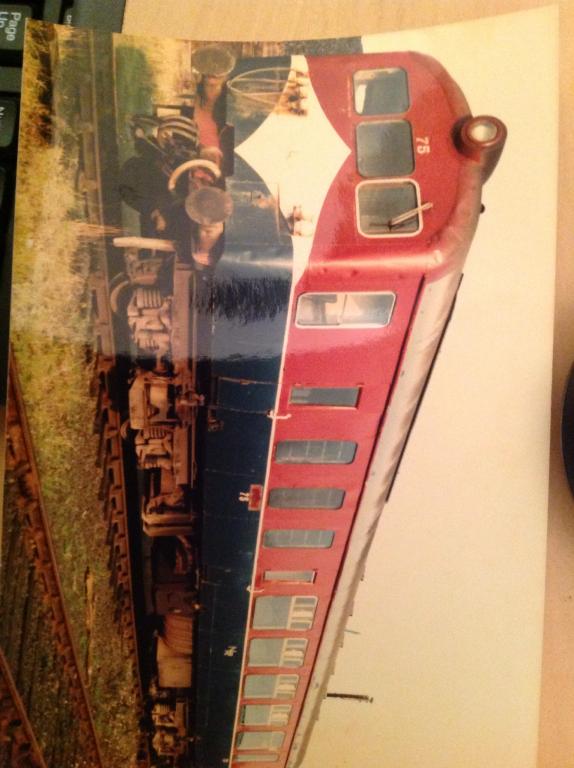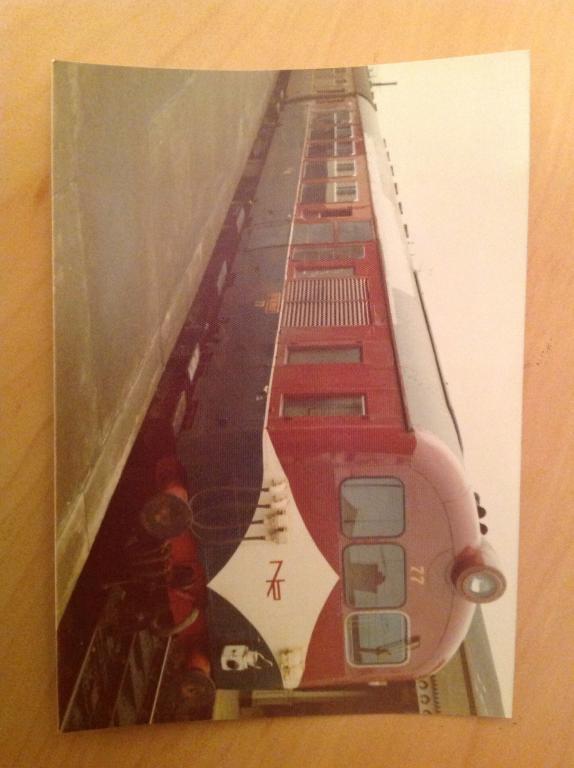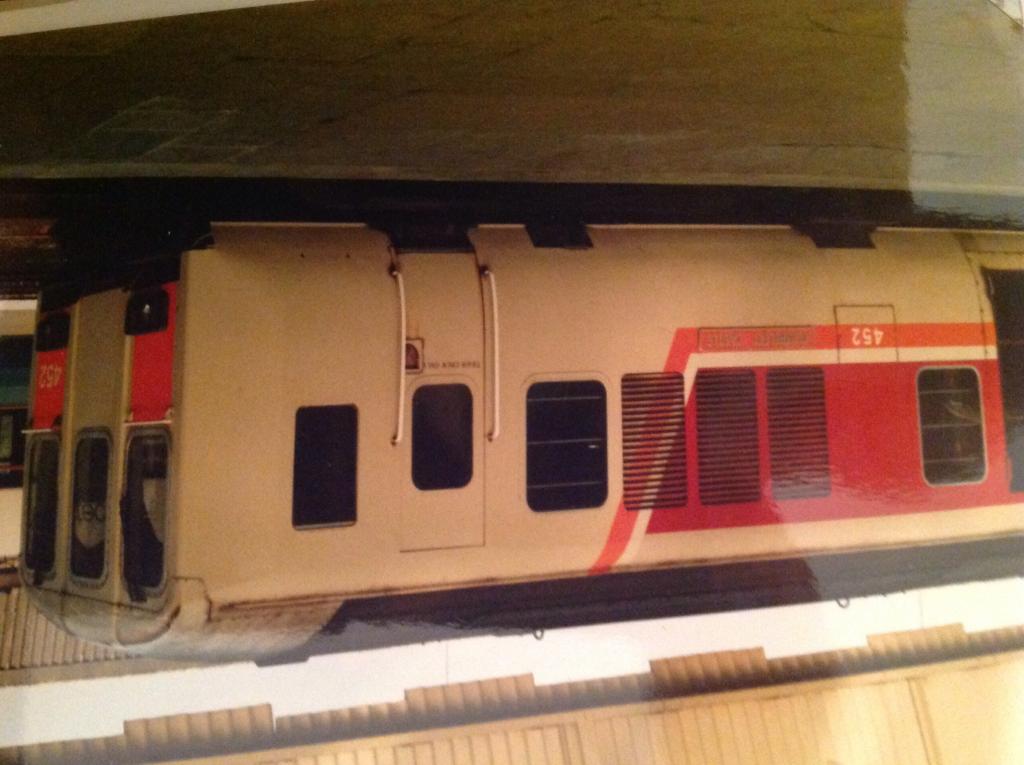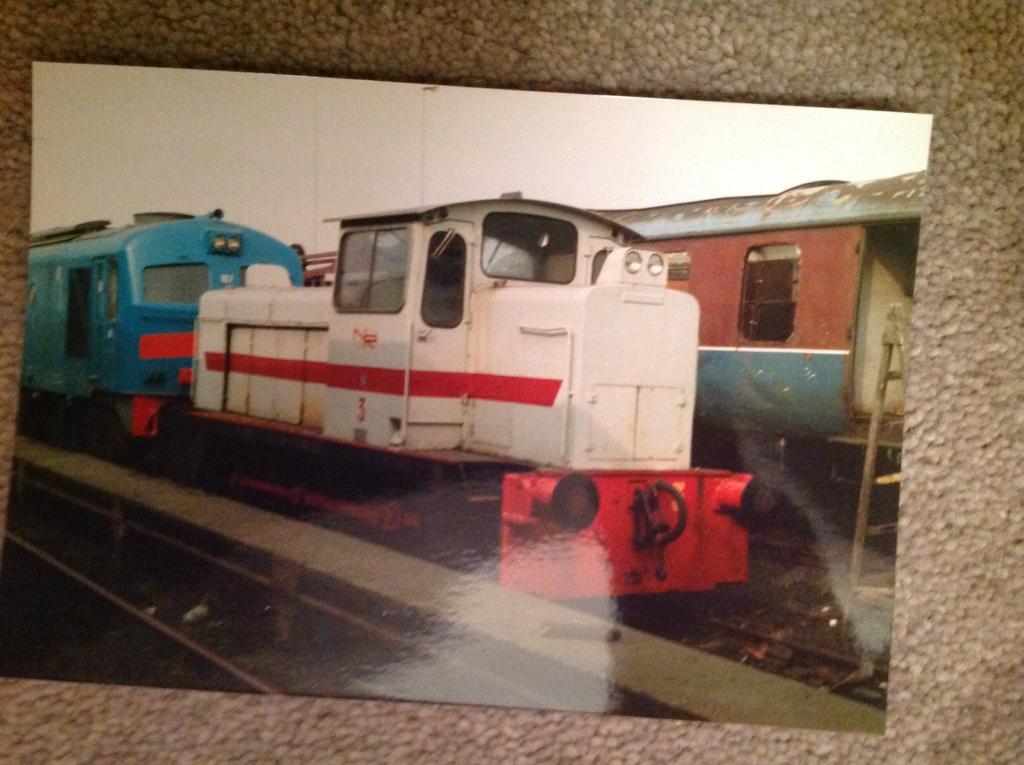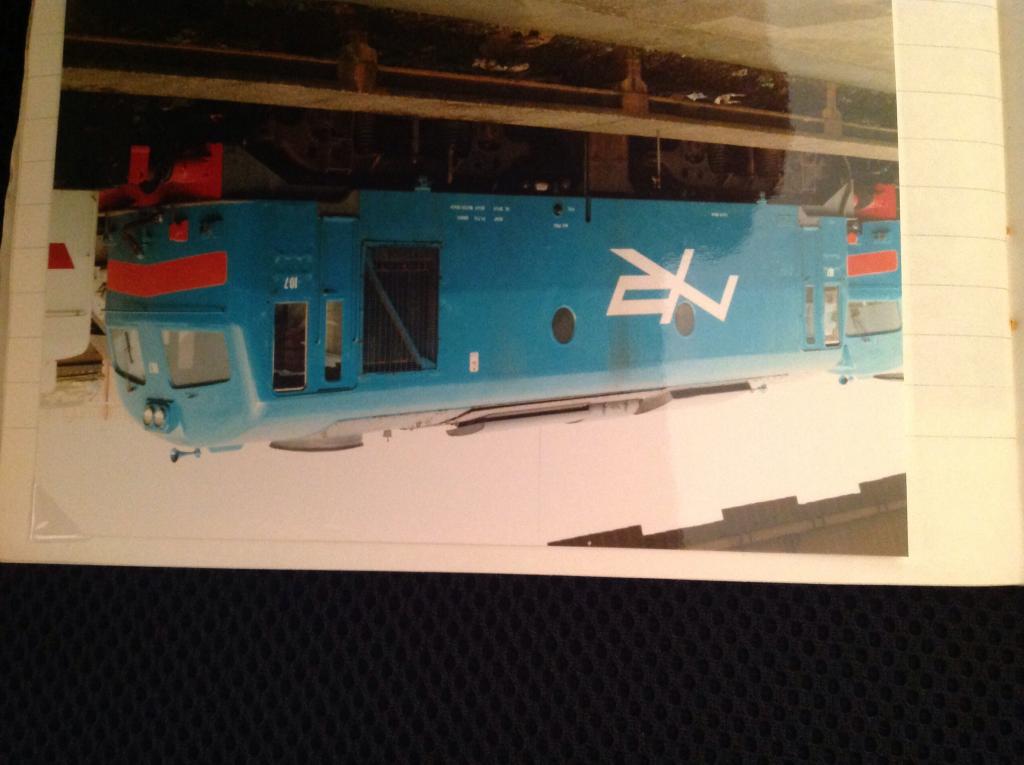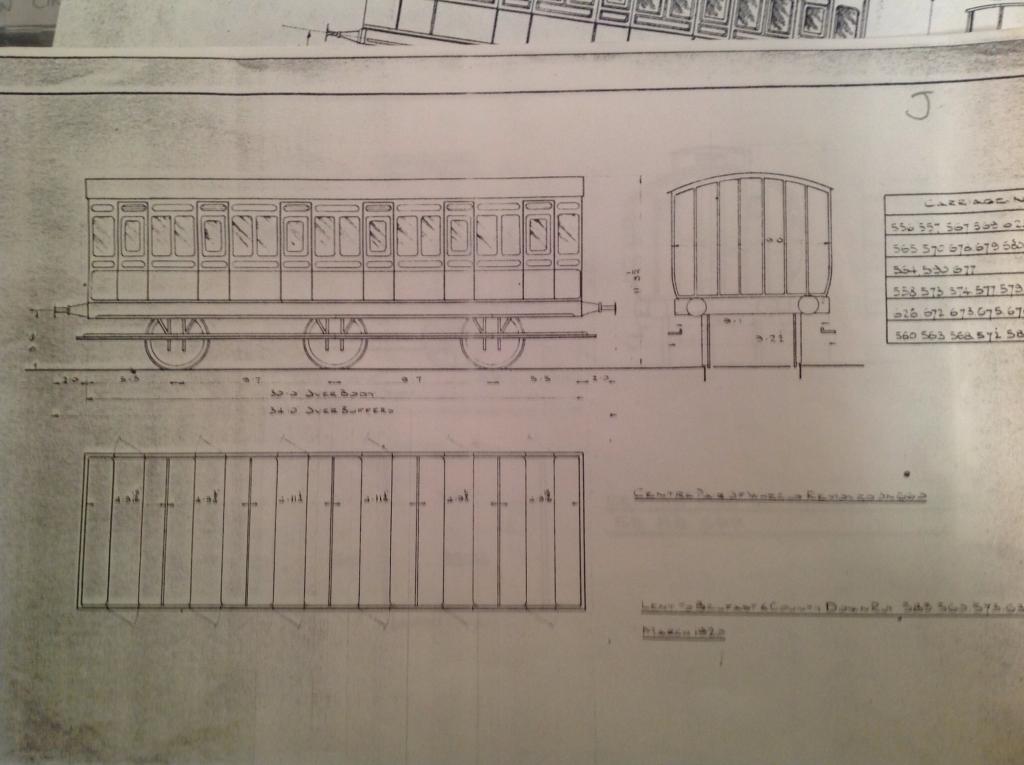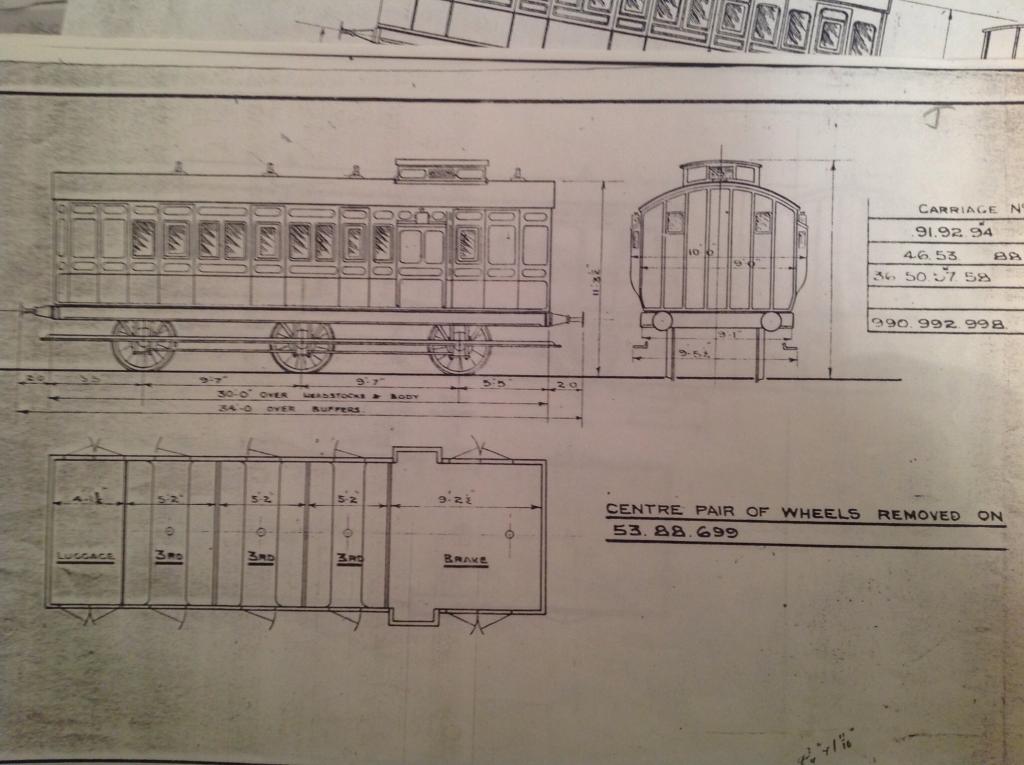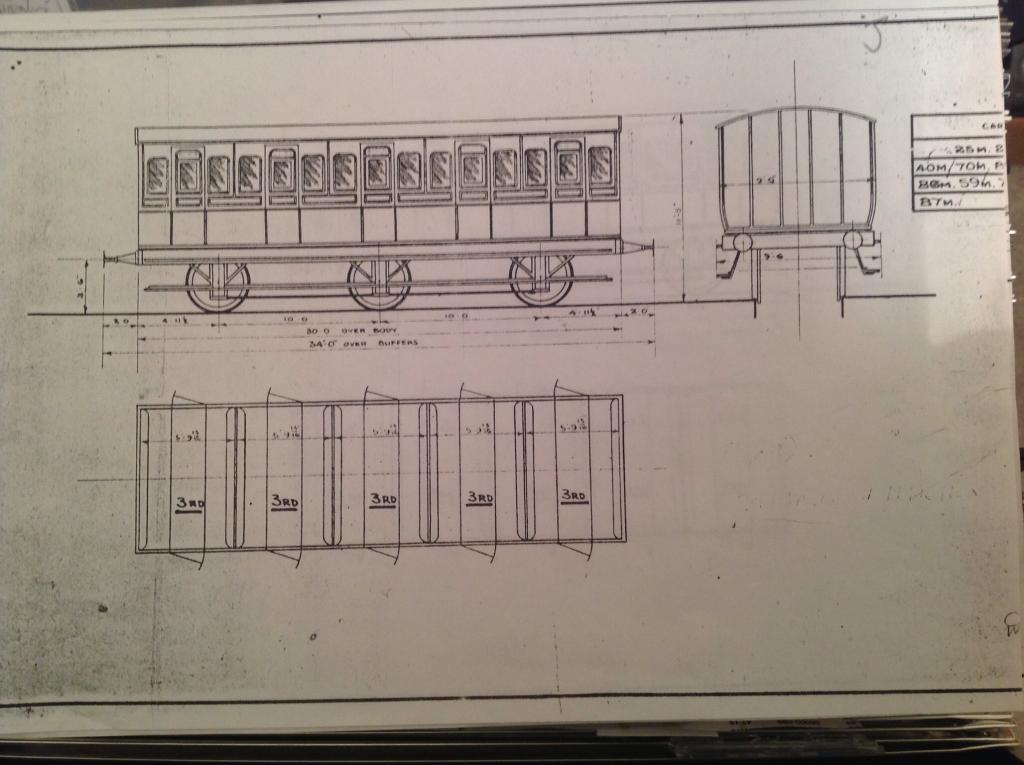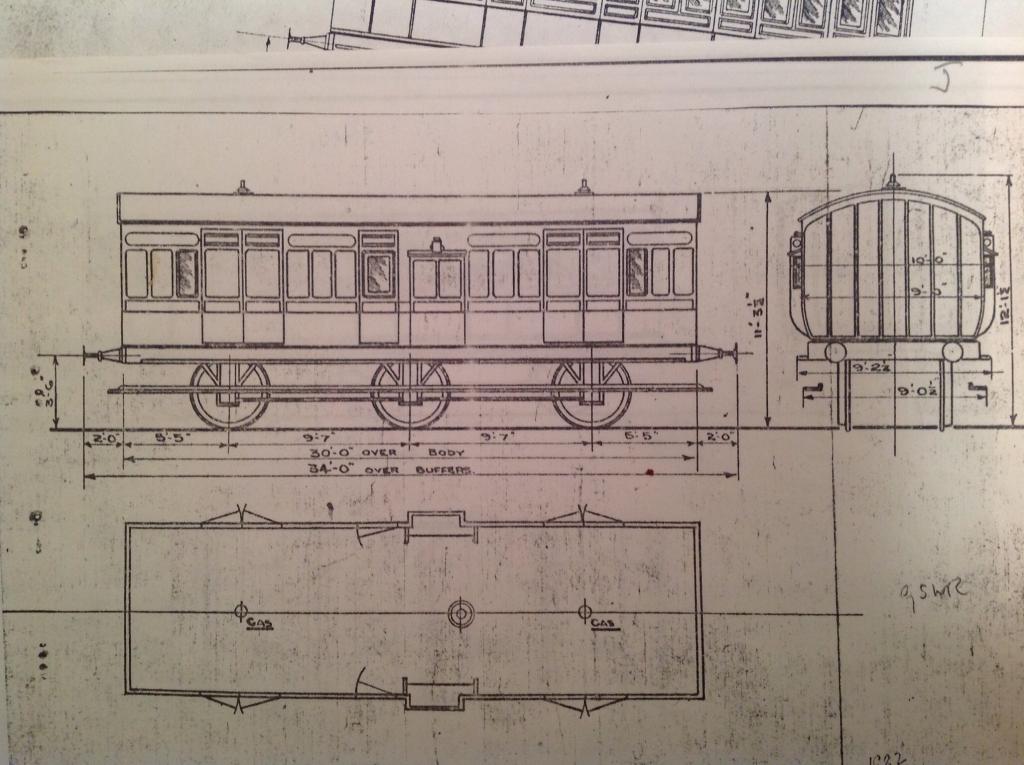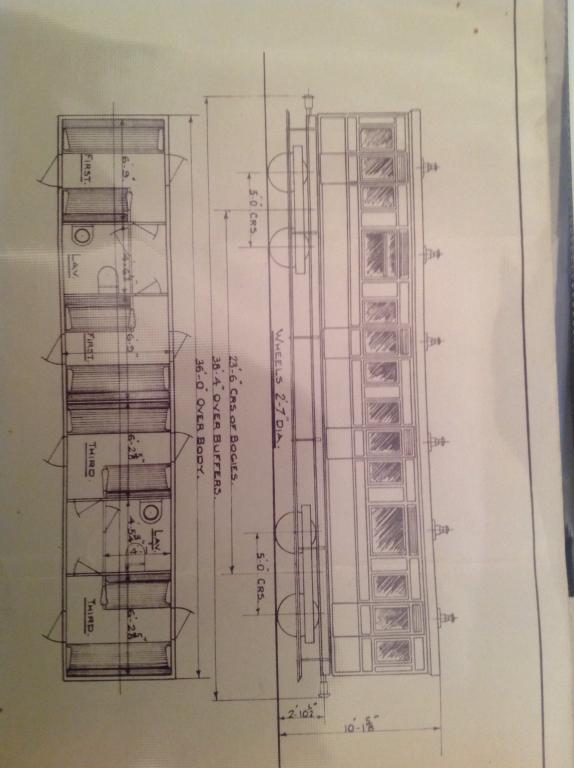-
Posts
15,873 -
Joined
-
Last visited
-
Days Won
393
Content Type
Profiles
Forums
Events
Gallery
Everything posted by jhb171achill
-
They must truly have looked strange to enthusiasts of the day!
-
They were delivered like that, all of them, but repainted in Black and Tan at first repaint. They therefore only bore that livery a very short time; I think the last to be repainted was about 1967/8. Originally, as you can see, they didn't have side handrails either. The wagon is a standard pattern GSR one of 1930/40's origin. A few remained in traffic until the large number of "H" vans were all in traffic. Therefore, that picture is taken between 1962 and maybe 1966. In Ireland they were used as main line locos, not shunters; in latter years often running in pairs with each other or members of the 141 or 181 classes. 124 and 134 are preserved.
-
I would be strongly inclined to agree, Mayner. As close as you can see on that picture of the Duckham's tank, it looks like it. New build tankers by then would have probably had an entirely different profile.
-
Here's a day out for you, based on old notes of one such, some seventy five years ago. A 400 class takes you to Cork, first of all; and you're sitting in a "new steel" coach (= Bredin type). Walk from Glanmire Road across to Albert Street for a look; it's several years since the Passage line closed now, and the track hasn't been long lifted. Cross the street for a look into Albert Quay, but that's routine stuff. Been on the West Cork before, will do it again. Time to walk to Capwell before returning to Albert Quay. A quick look round there, but no time to how to Western Road today, as we have an appointment back in Albert Quay. As we await, a quick look up into the Waterford-style "overhead" signal box. Now, it's time. Up into the cab of a 2.4.2 tank of GSWR ancestry, for a spin out to Macroom with empty cattle wagons. These are to be left out there for the next fair. Footplate jaunt to Macroom, dump the wagons and back in the guard's van - an ancient wooden GSWR one. Back to Dublin that night in an old wooden GSWR first class coach, with a different 400 up front. Departed Glanmire right on time, arrived at Kingsbridge about a minute early. And they didn't pass a solitary ICR en route...... Some years later, the Macroom line closed, and the route of it is now partly flooded by a reservoir.
-
GSWR, MGWR & a CDRJC carriage drawing.
jhb171achill replied to jhb171achill's question in Questions & Answers
Will do, Kirley. -
Buried Macroom loco? Pray tell.... if I've heard that one at some stage I must have forgotten all about it!
-
Not just that, Warbonnet, but 400s and 500s on all sorts of traffic, 4.4.0s as well - and from the mid twenties "Woolwich"'s too!
-
Work away, Nelson, a pleasure to assist!
-
Senior (Snr) went off walkabout one day in 1902 armed with a pass from Inchicore. Here are the notes he prepared in advance....
-
GSWR, MGWR & a CDRJC carriage drawing.
jhb171achill replied to jhb171achill's question in Questions & Answers
Sorry, meant to reply earlier. It's CDRJC Nos. 35 - 38, four "lavatory composites" built by R W Pickering & Co. in 1905. The last survivor, 38, was sadly scrapped in 1957. These were probably the most elegant coaches to run on the system, apart from six-wheel saloon No. 1, which of course now resides in Cultra. They were 36 feet long, weighed 12 tins, and carried just ten first class and twelve third class passengers. 35 and 36 were withdrawn and scrapped in 1952, but 37 had been sold off as a "hut" in 1949. Are its remains still lurking in some hedge up there? In the frontispiece of E M Patterson's excellent book on the CDR, one of them is depicted in the frontispiece; surely the quintessential Donegal picture of all time. -
-
Those grain wagons were originally grey, Burnthebox. In fact, when I took that picture at Rock Street it was the first and only time I saw one in orange.
-
Above and the following: Heuston Goods. Neither a 747 bus, roundabout, portakabin or "park-by-text" machine in sight. In those days, text was in books and newspapers, believe it or not! And that dog WANTED my ankles. Badly. Nearby, an E plays with coaches. Meanwhile in Connolly.... And meanwhile in de rebel shtate boy I know, I know.... but a 450 has been preserved. Same comfort levels. Ghastly, ghastly things to travel in. Lisburn, 08:35 all stops to Central, 1977.
-
The NCC breakdown crane in NIR maroon about 1972. I think I took this at Ballymena. Maroon paint, NIR logo; no gaudy bright yellow then, thank goodness. With all my wittering on about the importance of the availability of accurate historical livery information, and the ongoing failure of the preservation organisations to take it seriously, I have to hold my hands up and confess here. This is the RPSI's iconic, and fascinating, "Rosslare Express" relic, GSWR 861 of 1906. It never wore a livery remotely like that and nor did anything else here.... but.... yes, it was I who played a hand in painting it; my first ever job in the overall preservation world. As I've said here and there in defence of those who do the same - it's often a case of the person who can be bothered to turn up and slave away is the man who decides - or, a case of just get it painted because it's needed for a tour, and maroon is what's there.... Guilty, m'lud. Headford Junction, Co Kerry, June 1978, from loco cab.
-
These are the ones which wouldn't post earlier plus a few more. First one's for Nelson! I think it was taken either during a 1938 visit, or about 1942/3. Again, I should be able to establish exact dates and locations once I have gone through various lists. Port Laoise, 1977. Demolished very soon afterwards. The next few are Ballynahinch Junction, 1978. All obliterated now. Ballynahinch Station, June 1978. Old UTA (or possibly BCDR) signs still above bricked-up doors. They are in faded UTA green as far as I can see, probably not BCDR green - though I wouldn't rule it out. It's interesting to see "freight office" instead of "goods office" on a sign dating from at least the 1960s.
-
No problem, Colm, your detective work is appreciated. I've a few more, including this one of the H & W diesel towing an NCC railcar, as a passenger train apparently; presumably it had failed somewhere. I don't know the location but may be able to find out.
-
Photographic Website Updates
jhb171achill replied to thewanderer's topic in Photos & Videos of the Prototype
I'd say that on that morning, wanderer, they would have needed a ballast-thawing machine instead of a ballast cleaning machine! -
It was indeed the only one, Kevin; it was an unsuccessful experiment. I'm not sure how long it took to raise steam, but I would guesstimate 5 hours. It ran on turf alone.
-
I'll try those ones again .... need to re-scan them.
-
Hard to believe this was Heuston Station goods yard in 1978. [ATTACH=CONFIG]17266[/ATTACH] [ATTACH=CONFIG]17267[/ATTACH] E434 plays with a Mk. 2 [ATTACH=CONFIG]17268[/ATTACH] [ATTACH=CONFIG]17269[/ATTACH] Ballynahinch Junction, 1976. Despite oft-repeated theories about how it would become a huge preservation centre, forty years later the site is, sadly, obliterated. [ATTACH=CONFIG]17270[/ATTACH]
-
The following were taken between 1976 and 1978. First, two ex-GNR vans (of standard Dundalk 1954 ancestry) in the former Rock Street goods yard, Tralee. The one on the right is in CIE 1960s light grey, the left hand one despite having been repainted brown, still shows signs of its original "G N" lettering. This phenomenon was common in UTA repaints, which were very cheaply and badly done, but not CIE. Silver container, on silver-painted flat, as a barrier wagon. Possibly Asahi origin, though not used as such when photographed. Next, grain. Rest in Piece (s) A GSWR relic: by no means the only one forty years ago. Standard. No 1960-80 layout is complete without one - and pristine ones were rare! Draperstown (I think), 1947.
-
The first is blurred; with good reason. It's a case of "now you see it, now you don't"! Whhooooosssshhhhhhhh! It's 1939, and 800 goes charging down the main line near (a very rural) Clondalkin on one of its test runs. Next up, an NCC narrow gauge tank at Larne about 1938. The rest - these bring back more recent memories.... mostly 1978.
-
Note to moderator: I'm not exactly sure where best to post this, but I'll leave it in your capable hands. To the modelling community: these are rough scans. If you PM me I can get you decent copies.
-
CIE coach livery in the late 1950s
jhb171achill replied to David Holman's question in Questions & Answers
They certainly do look grey, BSGSV. I think the leading one is just weathered, and thus did make prime black look greyish. But as you say, the next one and the van look grey. It's possible a few were done like that, but also possible it's weathering. Certainly, black was the official version. In model making, roofs can take on all manner of weathered characteristics. Look at how many CDRJC and GNR locos appear to have black domes; all were painted red! (or blue). In recent timed, orange-painted loco and coach roofs often looked dirty. Equally, nice shiny black hot dumbed down pretty quick. Green CIE roofs - no. Above black / grey - for me, I'd say the jury's out! Interesting. -
[ATTACH=CONFIG]17238[/ATTACH] There's Bessbrook & Newry in the midst of this lot. [ATTACH=CONFIG]17239[/ATTACH] [ATTACH=CONFIG]17240[/ATTACH] [ATTACH=CONFIG]17241[/ATTACH] [ATTACH=CONFIG]17242[/ATTACH] [ATTACH=CONFIG]17242[/ATTACH] [ATTACH=CONFIG]17243[/ATTACH] [ATTACH=CONFIG]17244[/ATTACH] [ATTACH=CONFIG]17245[/ATTACH]
.png.c363cdf5c3fb7955cd92a55eb6dbbae0.png)


